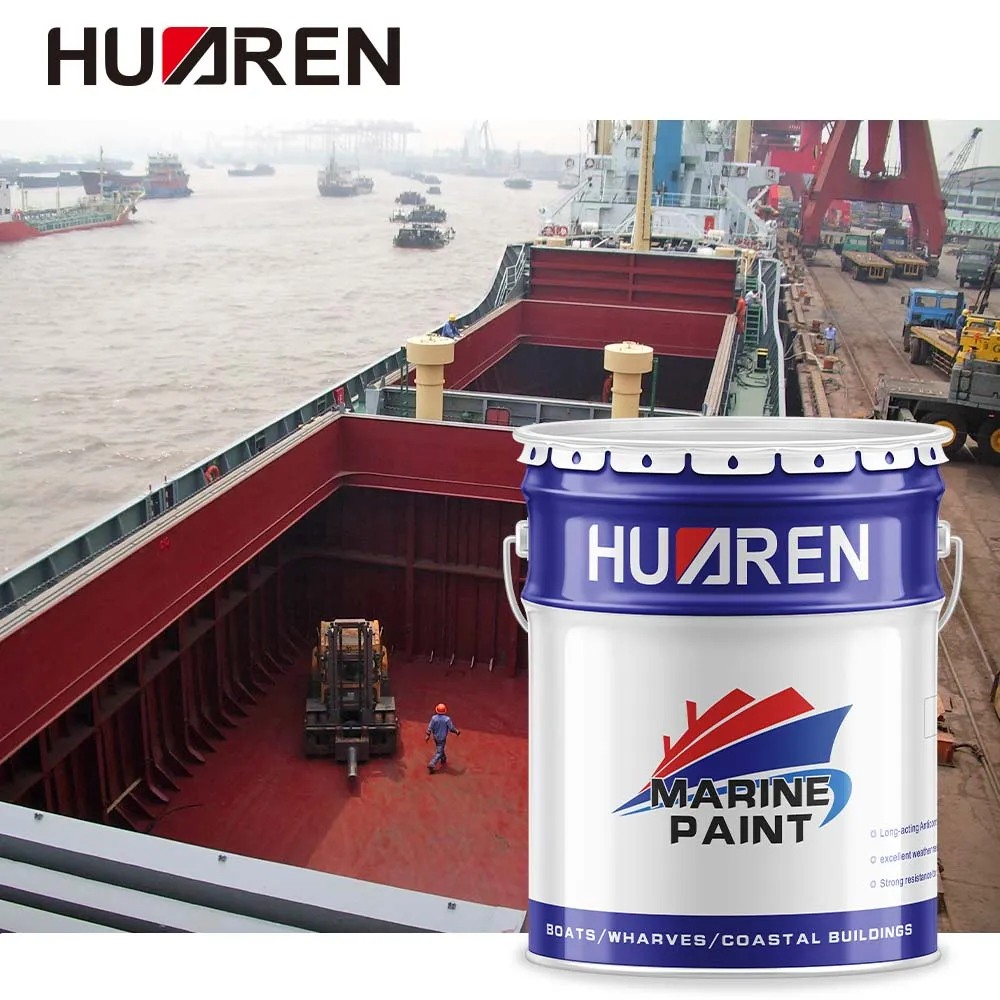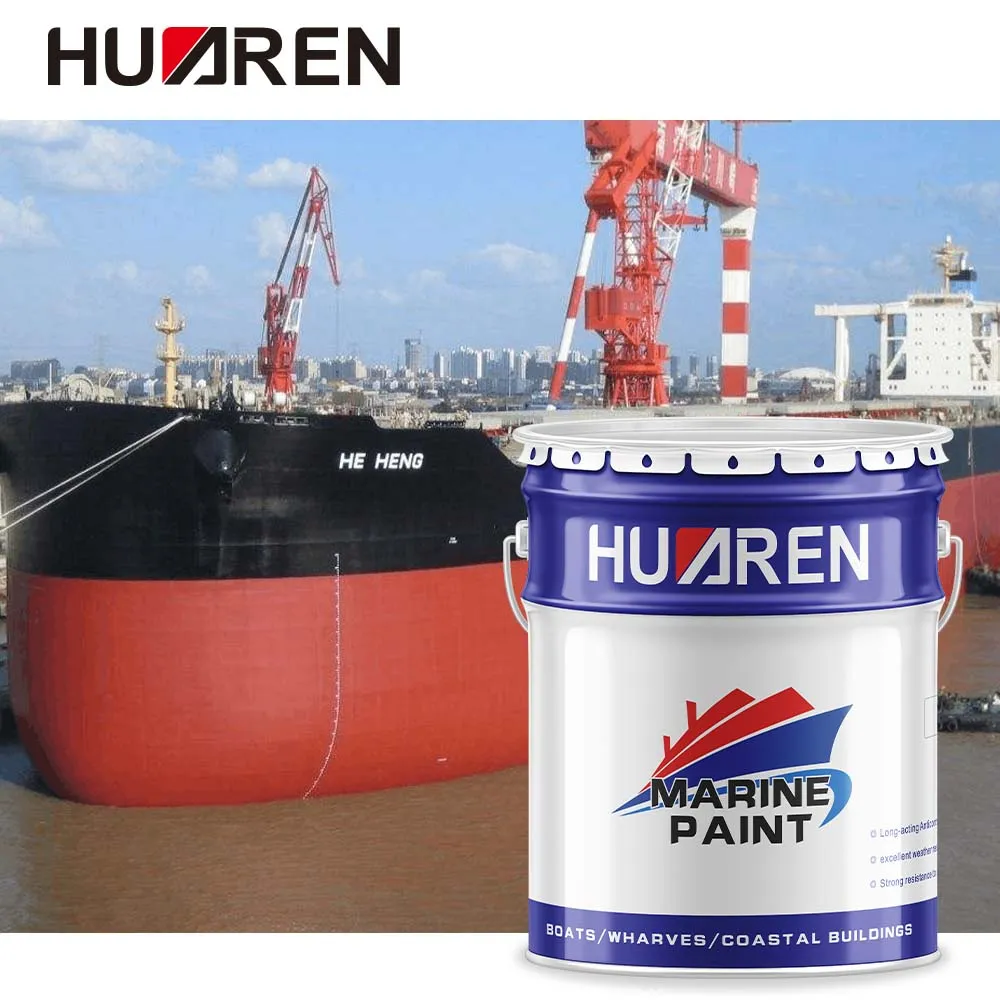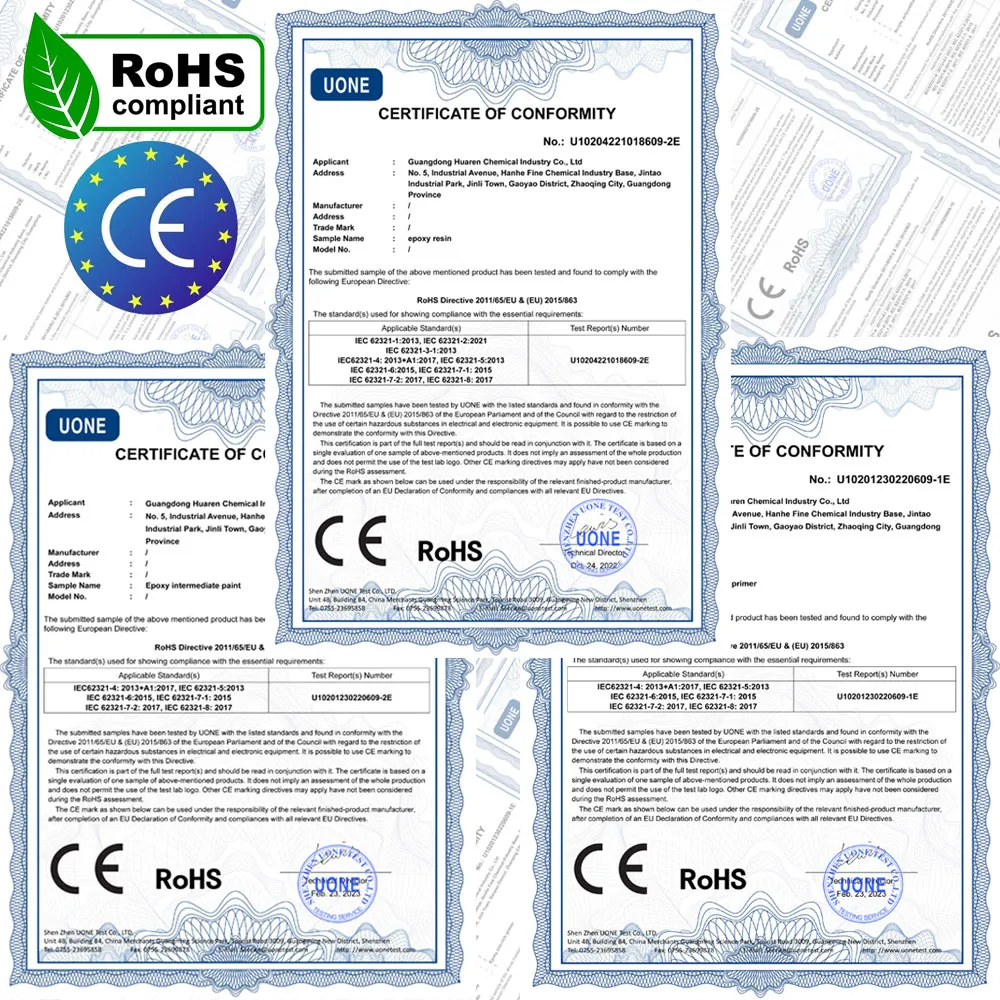Boat bottom paint, also known as antifouling paint, is a coating specially applied to the bottom of a boat. Its main purpose is to protect the bottom of the boat from the attachment and erosion of marine organisms, while improving the navigation performance and fuel efficiency of the boat. Boat bottom paint plays a vital role in shipping, fishing, leisure boats and other marine activities.

What is boat bottom paint made of? How many types are there?
Boat bottom paint usually consists of ingredients such as resins, pigments, solvents and biocides. According to its working principle and application requirements, boat bottom paint can be divided into: hard antifouling paint, self-polishing antifouling paint and non-metallic antifouling paint.
1. Hard antifouling paint:
Hard antifouling paint is a durable boat bottom paint. It is characterized by forming a hard protective layer on the surface of the coating to prevent marine organisms from attaching. This paint is suitable for high-speed boats and boats that need to be cleaned frequently. The main disadvantage of hard antifouling paint is that its protective effect is limited and requires regular maintenance and re-coating.
2. Self-polishing antifouling paint:
Self-polishing antifouling paint is a type of bottom paint widely used on various types of ships. This paint gradually wears away during the ship's voyage, releasing the biocides in it, thereby continuously inhibiting the attachment of marine organisms. The advantages of self-polishing antifouling paint are long-lasting protection, low maintenance costs, and are suitable for ships of all speeds.
3. Non-metallic antifouling paint:
Non-metallic antifouling paint is an environmentally friendly bottom paint for ships, which usually does not contain copper or other heavy metals. This paint inhibits the attachment of marine organisms through physical or chemical means and is suitable for ships with high environmental requirements, such as yachts and scientific research vessels.

What is the role of bottom paint?
The role of bottom paint is to: prevent marine organisms from attaching to the bottom of the ship (such as shellfish, algae and barnacles), improve fuel efficiency (fuel consumption can be reduced by up to 20%), extend the life of the ship, and maintain the appearance of the ship.
1. Prevent marine organisms from attaching:
One of the most important functions of bottom paint is to prevent marine organisms (such as shellfish, algae and barnacles) from attaching to the bottom of the ship. Once these organisms attach to the bottom of the ship, they will not only increase the weight of the ship, but also increase water resistance, reduce speed and increase fuel consumption. By applying bottom paint, the attachment of these organisms can be effectively inhibited, thereby maintaining the performance and efficiency of the ship.
2. Improve fuel efficiency:
Bottom paint can reduce the resistance caused by the attachment of marine organisms, thereby improving the fuel efficiency of the ship. According to research, ships with clean bottoms and antifouling paint can reduce fuel consumption by up to 20%. This not only reduces operating costs, but also reduces greenhouse gas emissions, which has positive significance for environmental protection.
3. Extend the life of the ship:
The corrosive effect of seawater on the hull is one of the main reasons for the aging of ships. The anti-corrosion ingredients in bottom paint can effectively slow down the corrosion of seawater on the hull and extend the service life of the ship. In addition, antifouling paint can protect the surface of the hull from mechanical damage, further improving the durability of the ship.
4. Maintain the appearance of the ship:
Bottom paint is not only functional, but also improves the appearance of the ship. The bottom surface of the ship painted with ship bottom paint is smooth and tidy, which reduces the appearance damage caused by biological adhesion and corrosion. This is especially important for leisure boats and high-end yachts, because they have high requirements for appearance.

What are the application ranges of ship bottom paint?
The application range of ship bottom paint includes: merchant ships and cargo ships (reducing the maintenance cost of the hull and improving navigation efficiency), fishing boats (improving navigation speed and maneuverability, and enhancing the fishing ability of fishing boats), yachts and leisure boats (maintaining the appearance of the ship), scientific research vessels and special vessels (improving work efficiency).
1. Merchant ships and cargo ships:
Merchant ships and cargo ships usually sail in the ocean for a long time, and marine biological adhesion and corrosion are the main problems they face. By using high-performance ship bottom paint, the maintenance cost of the hull can be significantly reduced, the navigation efficiency can be improved, and the goods can be delivered on time.
2. Fishing boats:
Fishing boats often operate at sea, and a large number of marine organisms are easily attached to the bottom of the boat, affecting the fishing efficiency. The use of ship bottom paint can keep the hull clean, improve the navigation speed and maneuverability, and enhance the fishing ability of fishing boats.
3. Yachts and leisure boats:
Yachts and leisure boats have high requirements for performance and appearance. Bottom paint can not only prevent biological attachment and corrosion, but also maintain the beautiful appearance of the boat and extend its service life.
4. Scientific research vessels and special vessels:
Scientific research vessels and special vessels (such as ocean exploration ships and rescue ships) need to operate in various complex marine environments. The use of bottom paint can ensure its stable performance in different environments and improve work efficiency.

How to choose bottom paint?
1. Choose according to the type of ship:
Different types of ships have different requirements for bottom paint. High-speed ships need to choose hard antifouling paint, while ships that are docked in ports for a long time are suitable for self-polishing antifouling paint. Ships with high environmental protection requirements can choose non-metallic antifouling paint.
2. Choose according to the navigation area:
Different navigation areas have different types and densities of marine organisms. There are many kinds of marine organisms in tropical and subtropical waters, and the attachment speed is fast, so high-efficiency antifouling paint is needed. The biological attachment speed in temperate and cold waters is relatively slow, and a more durable antifouling paint can be selected.

How to use bottom paint?
The coating process of boat bottom paint has an important influence on its effect. Before coating, the hull needs to be thoroughly cleaned to remove old paint and attachments. When coating, attention should be paid to the uniformity and thickness of the paint layer to ensure the integrity and adhesion of the paint film. After coating, it needs to be fully dried and cured to achieve the best effect.
Summary of boat bottom paint
As an important means of ship maintenance and protection, the role of boat bottom paint cannot be ignored. It can not only prevent marine organisms from attaching, extend the service life of the ship, improve fuel efficiency, but also maintain the appearance of the ship. When selecting and using boat bottom paint, the appropriate product should be selected according to the type of ship, the navigation area and specific needs, and the correct coating process should be strictly followed to achieve the best effect.
With the continuous development of marine activities, boat bottom paint will continue to play an important role in the fields of shipping, fishing and leisure ships, providing strong guarantees for the efficient operation of ships and environmental protection.

